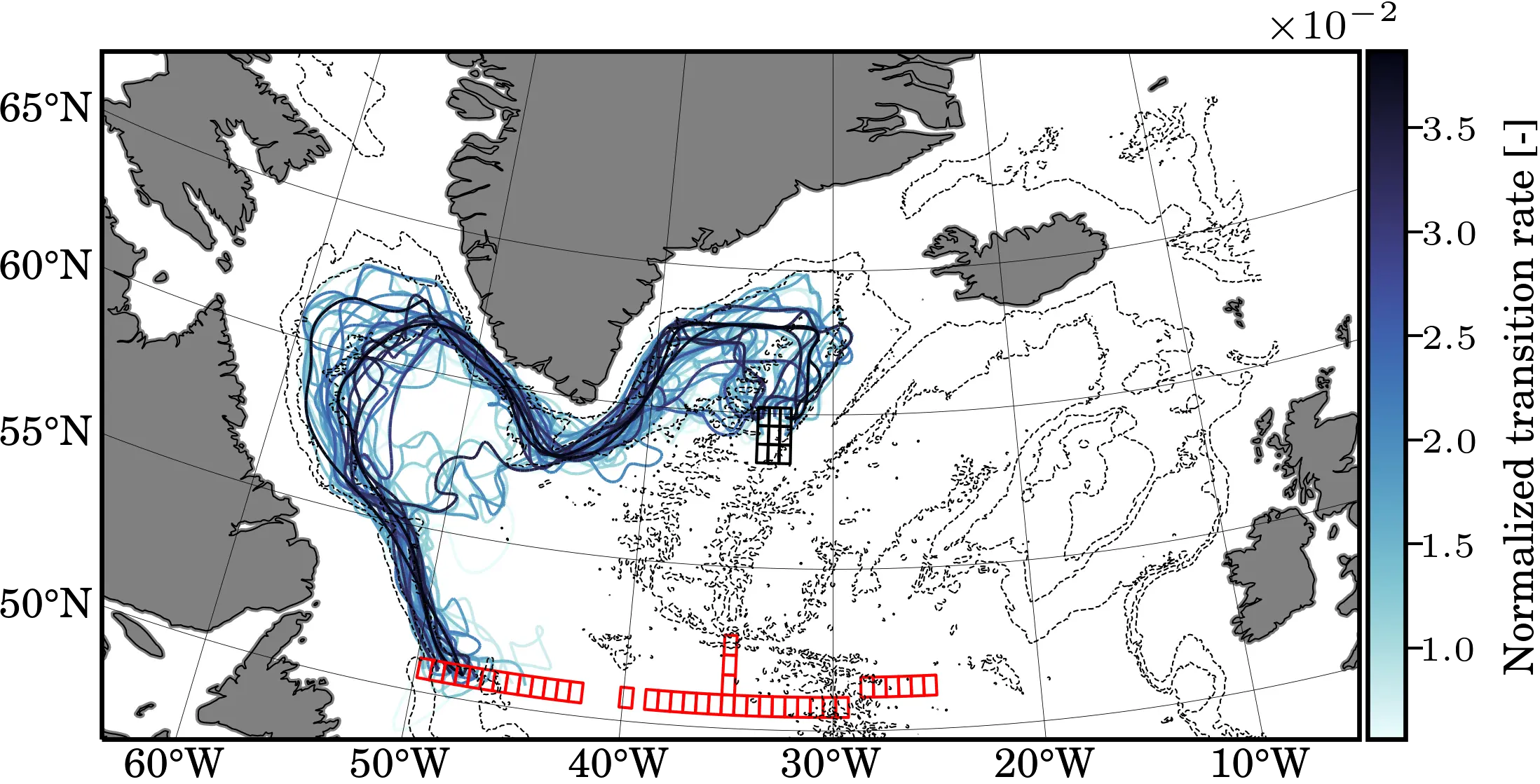Problem
Recently introduced in oceanography to interpret the near-surface circulation, transition path theory (TPT) is a methodology that rigorously characterizes ensembles of trajectory pieces flowing out from a source last and into a target next, i.e., those that most productively contribute to transport. Here we use TPT to frame, in a statistically more robust fashion than earlier analysis, equatorward routes of North Atlantic Deep Water (NADW) in the subpolar North Atlantic.

TPT is applied on all available RAFOS and Argo floats in the area by means of a discretization of the Lagrangian dynamics described by their trajectories. By considering floats at different depths, we investigate transition paths of NADW in its upper (UNADW) and lower (LNADW) layers. We find that the majority of UNADW transition paths sourced in the Labrador and southwestern Irminger Seas reach the western side of a target arranged zonally along the southern edge of the subpolar North Atlantic domain visited by the floats. This is accomplished in the form of a well-organized deep boundary current (DBC). LNADW transition paths sourced west of the Reykjanes Ridge reveal a similar pattern, while those sourced east of the ridge are found to hit the western side of the target via a DBC and also several other places along it in a less organized fashion, indicating southward flow along the eastern and western flanks of the Mid-Atlantic Ridge. Naked-eye inspection of trajectories suggest generally more diffused equatorward NADW routes.
Publications
- P. Miron, P., Beron-Vera, F.J., and Olascoaga, M.J., Transition Paths of North Atlantic Deep Water, Journal of Atmospheric and Oceanic Technology, 2022, link
- Miron, P., Olascoaga, M. J., Beron-Vera, F. J., Drouin, K. L., and Lozier, M. S.: Identification and quantification of the North Atlantic Deep Water pathways, EGU General Assembly 2021, online, 19–30 Apr 2021, EGU21-10358, https://doi.org/10.5194/egusphere-egu21-10358, 2021, link
- Supplementary slides for EGU21, link